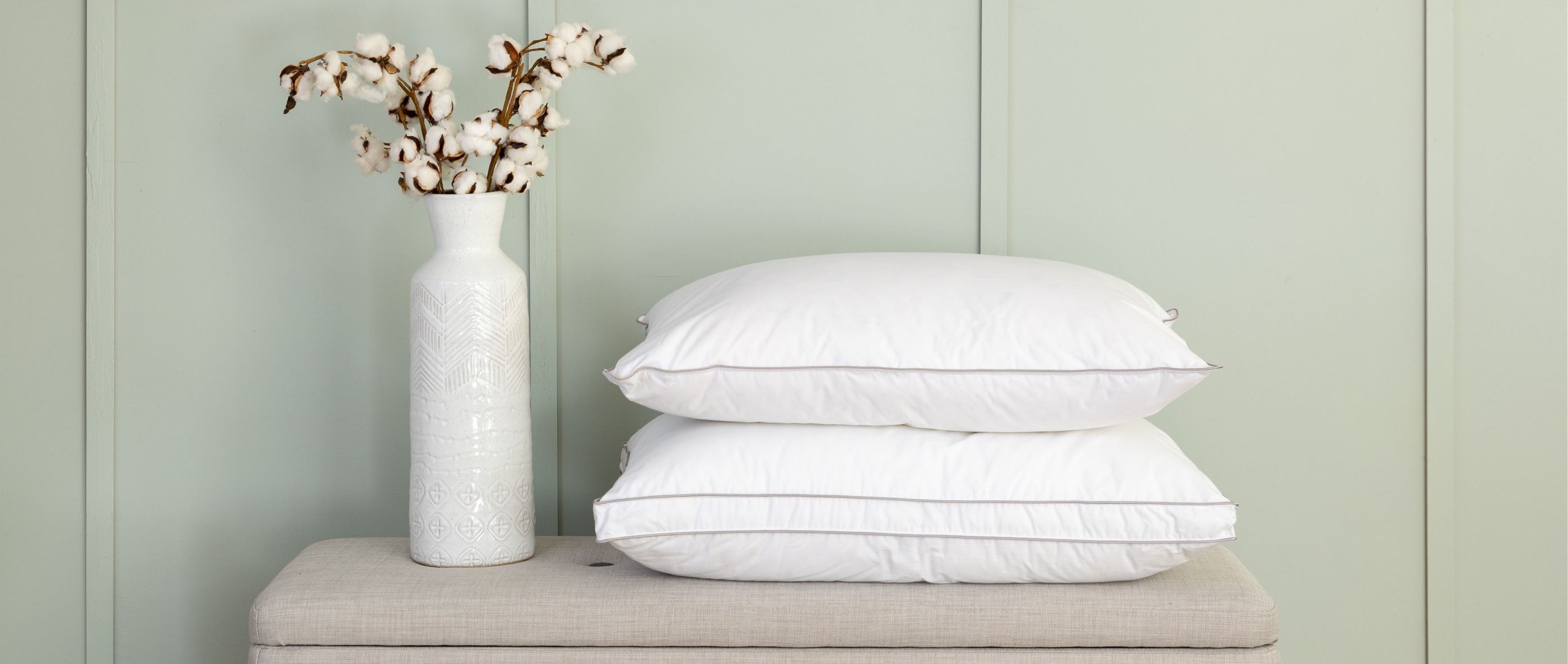Is Sleeping Without a Pillow Beneficial?

Struggling to get comfortable at night? Waking up with a stiff neck? It’s possible your pillow is to blame. Sleeping with a pillow that’s too thin, too thick, too lumpy or just too old can cause more sleeping problems than you might imagine. So much so that it’s tempting to do away with your pillow altogether.
Benefits of sleeping with a pillow
A pillow isn’t just a soft place to rest your head. It helps you maintain the natural curves in your spine and align your head and neck with the rest of your body. Better spinal alignment reduces pressure on your joints and allows your muscles to “switch off” while you sleep so they can rest and repair themselves ready for the following day. Not only does this help your body recharge, but it can also help reduce headaches by limiting the build-up of tension in your shoulders and neck.
The story doesn’t end with your muscles. Using a pillow to raise your head and upper body as you sleep can help with a range of health problems. These include minor concerns such as puffy eyes in the morning as well as sleep-disrupting issues, such as recurrent acid reflux.
Pillow that can help with neck pain
The best pillow to help with neck pain will depend on the type of sleeper you are.

Side sleepers need a pillow to benefit their posture
We’re sorry to say, if you’re a side sleeper, sleeping without a pillow isn’t a good idea. Using the right pillow raises your head and neck and aligns it with your spine. Without one, your head drops down, putting considerable pressure on your neck and spine muscles. You’ll also put pressure on your shoulders which can cause aches and pains the next day.
Best pillows for back pain
Body pillows are a great way to reduce pressure in the lower back and help with spinal alignment. They are ideal for use during pregnancy, post surgery or for anyone suffering joint or back pain. Place your full body pillow between your knees or other parts of the body that require pressure release.
How many pillows should you sleep with?
Side sleepers should choose a deeper pillow that fills the gap between their heads and the mattress. The broader your shoulders, the deeper your pillow should be. Men will typically need two pillows whilst individuals with smaller frames – such as some women and most children – will need just one pillow.
Side sleepers may also find that their lower backs ache at night and in the morning. Placing a thin pillow between your knees can help keep your spine aligned and reduce the stress on your hips and lower back.
Sleeping without a pillow
Back sleepers

Could a back sleeper benefit from sleeping without a pillow?
Back sleepers will also benefit more from using a pillow. It’s a common assumption that lying flat means perfect spinal alignment.
Back sleepers often sleep with their heads tipped back. Sleeping without a pillow will strain the neck muscles and the muscles at the front of the chest. Over time this can cause neck pain and headaches. Using a pillow to raise your head a little will help support your head and neck for a better spinal curve.
Back sleepers should opt for pillows that are a medium depth and firmness – just enough to lift your head an inch or so. Remember the bigger your frame, the deeper your pillow needs to be. Children and teens will ideally need thinner pillows than adults because of their smaller build. Pillows that are too deep will tip your head forward, placing strain on the back of your neck. This can cause neck pain and headaches as well as snoring.
Sleeping on your back can put pressure on your lower spine. Placing a thin pillow or folded towel under your knees can help relieve some of the pressure on your lower back for a better night’s sleep.

Is a pillow needed for front sleepers? Or is it better to sleep without a pillow?
Front sleepers are the only group of sleepers who can get away without a pillow. However, we feel the need to point out that sleeping on your stomach is generally not recommended. This is because it accentuates the arch in your lower back and puts pressure on your neck, shoulders and arms which can become uncomfortable the next day.
The good news is if you’re a confirmed tummy sleeper, you can take steps to better align your spine as you sleep. A thin pillow will support your head and provide some extra softness. But you can go without a pillow if you prefer. As with other sleep positions, you need to take your physical build into account. If you’re well-built or a woman with a larger bust and you prefer to sleep on your front, then a slightly deeper pillow will be a better choice. This will help you align your head with the rest of your spine more effectively.
There are other factors that affect your sleeping alignment such as the softness or firmness of your mattress. We’d also recommend you get medical advice about ongoing back or neck pain or headaches in case your problem is caused by something other than your sleeping posture.
Still not sure on the best pillow to suit your sleep needs? Try our helpful Pillow Finder, just answer a few simple suggestions and we’ll guide you to your perfect pillow.


